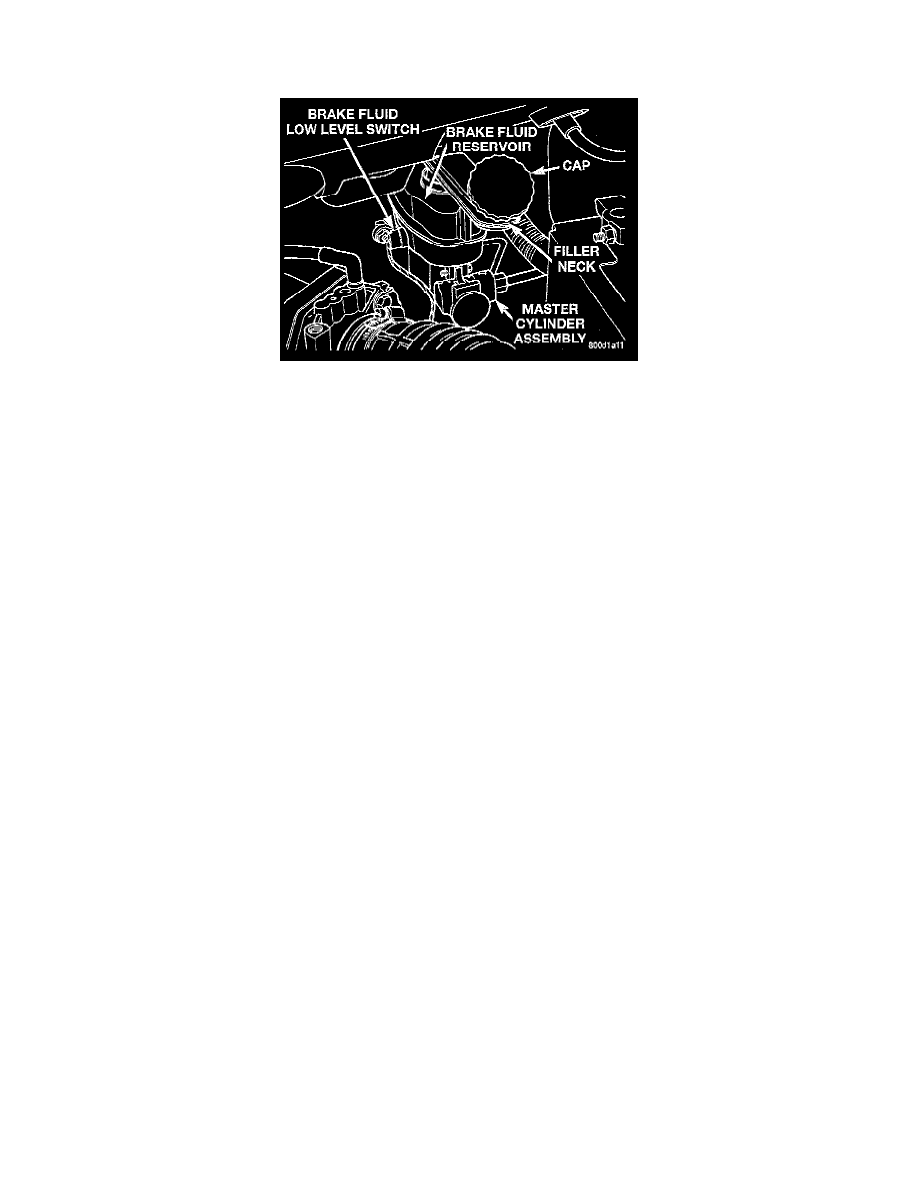Voyager V6-201 3.3L VIN R SMFI (1997)

Brake Master Cylinder: Description and Operation
Without Antilock Brakes
Master Cylinder Assembly
GENERAL INFORMATION
This vehicle uses two different types of master cylinders. Master cylinder usage depends on what type of brake system the vehicle is equipped
with. If a vehicle is not equipped with antilock brakes, or is equipped with antilock brakes without traction control, a conventional compensating
port master cylinder is used. If a vehicle is equipped with antilock brakes with traction control, a dual center port master cylinder is used. Both of
the master cylinder used have a piston bore diameter of 23.8 mm. The master cylinder is not a repairable component and must be replaced if found
to be functioning improperly. The brake system master cylinder assembly consists of the following components. The body of the master cylinder is
an anodized aluminum casting. It has a machined bore to accept the master cylinder piston and threaded ports with seats for the hydraulic brake
line connections. The brake fluid reservoir of the master cylinder assembly is made of a see through polypropylene type plastic. A low fluid switch
is also part of the reservoir assembly.
CAUTION: Do not hone the bore of the cylinder as this will remove the anodized surface from the bore.
The master cylinder primary outlet port supplies hydraulic pressure to the right front and left rear brakes. The secondary outlet port supplies
hydraulic pressure to the left front and right rear brakes.
